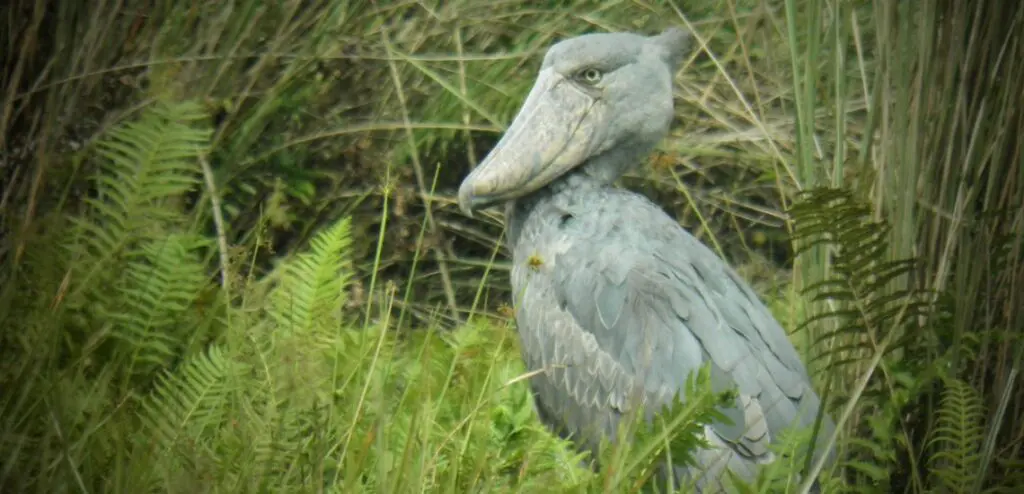Make a donation
Our evidence-backed approach ensures your money will always go where it’s needed most
As a global Partnership, we believe in internationalism. We have translated as much content in your language as our resources allow. Please visit the English language site to view all of our content.
Shoebills

Shoebills are large, prehistoric-looking birds which haunt freshwater marshes and swamps in East Africa, thus fondly referred to by many as the “king of the marshes”.
There is a single species of Shoebill, Balaeniceps rex, and although they are sometimes incorrectly referred to as a stork, they are more closely related to pelicans. The Shoebill can be found in freshwater swamps in Africa from South Sudan to Zambia.
The shoebill is classified as Vulnerable, meaning the species is at high risk of becoming extinct. Estimates suggest there are only between 3,300 and 5,300 mature individuals left in the wild, and populations are on the decline. Their future is in jeopardy due to hunting, nesting disturbance, habitat loss, and drought caused by climate change. Shoebills are also threatened by illegal live bird trade, with high mortality during capture, transit, and captivity.
Family: Balaenicipitidae
Diet: Carnivore
Life span: up to 35 years
Size: up to 152 cm
Weight: females – 4.9kg, males – 5.6kg
Have you ever seen a bill quite like the one of a shoebill? The bird is aptly named after this signature feature and its resemblance to a Dutch clog. At a foot long, their bill is the third longest of all living birds. Its sharp edges and hook at the tip allows the bird to grab, grip, and kill live prey.
Shoebills are mostly sedentary and can remain still as a statue for hours. Their patience pays off when it’s time to feed, allowing them to ambush unsuspecting prey who likely had no idea the motionless bird was lurking in the area. Once prey is in its sights, the bird will quickly strike, with 60% of attempts resulting in a kill. Their sharp, large beak allows the shoebill to hunt larger prey than is typical for wading birds. They primarily eat fish, showing a preference for lungfish, but will also prey on frogs, water snakes, and young crocodiles.
The shoebill is a solitary species, choosing to forage 20 metres or more apart and when breeding, less than three nests are found per square kilometre. Even when paired up in the breeding season, shoebills still appreciate their own space and will feed at opposite ends of their territory. The breeding pair build their nest together on floating vegetation and defend their territory aggressively. Females lay up to three eggs and when hatched, both parents feed, guard, and shade the chicks. Although shoebills commonly hatch more than one chick, they only raise one. The younger chicks are usually left to die, unless the eldest is weak or doesn’t survive.
Our evidence-backed approach ensures your money will always go where it’s needed most
Join a worldwide community of bird lovers, and help to make a real difference
Join the ever growing community of Species Champions supporting our work to prevent extinctions